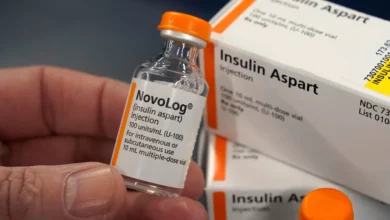
Organized diet and exercise programs can stave off diabetes for those at risk, according to a new recommendation.
The Community Preventive Services Task Force, an independent, unpaid group of public health and prevention experts who develop recommendations for community health, commissioned a review of 53 studies describing 66 combined diet and physical activity promotion programs. The studies were done between 1991 and 2015.
The Task Force found strong evidence that these programs are effective at reducing the number of new cases of diabetes, according to a report in Annals of Internal Medicine.
“If you exercise and eat better, you’ll reduce your risk of developing diabetes,” said Dr. Patrick L. Remington, coauthor of the recommendation statement on behalf of the Task Force. “But if you simply tell somebody to eat better and exercise, that does not work.”
The diet and exercise promotion programs included providers or trained laypeople working directly with participants for at least three months, providing counseling, coaching and support over multiple sessions.
Some also included specialists like nutritionists, physiotherapists, individually tailored diet and exercise programs and specific weight-loss goals.
The programs were targeted to teens and adults with “pre-diabetes,” marked by elevated blood sugar levels that were not yet high enough to be diagnosed with type 2 diabetes.
“In general, people who may be at increased risk for diabetes (both adults and children) include those who are overweight or obese and those who have a sedentary lifestyle,” Dr. Ethan Balk of Brown University in Providence, Rhode Island, lead author of the evidence review, told Reuters Health by email.
The review found that community-based programs helped improve weight loss, lower blood sugar and reduce the risk for a later diabetes diagnosis. Some also reduced blood sugar and improved cholesterol markers, and none reported any long-term harms related to the programs.
In an economic assessment, the Task Force also found that these programs are cost-effective. Half of participants paid less than $653 to take part, and costs were lower for group-based or primary-care based programs.
“This is more cost effective than most of what we do in medicine, but not cost saving, it does cost something,” Remington said by phone. “But the return for those costs are many years of healthy life gained, so we consider it cost effective.”
Gyms and health clubs already offer these types of programs for a modest fee, he said.
It’s “shocking,” he added, “that we are not doing it as a routine part of the health care system. We’ve designed a healthcare system to treat sick people, not to prevent disease.”
The first step may be a change in providers’ attitudes, he said, noting that many doctors do not believe that diabetes can be prevented through lifestyle changes.
“I think that the medical community has been so influenced by long term secular trends that they’ve lost confidence in the individual to treat themselves through lifestyle changes,” he said.
Then the insurance and outreach system needs to change, and training laypeople or nonphysician specialists to provide these programs should increase, he said.
“The (Affordable Care Act) doesn’t really cover these type of intense prevention programs,” Remington said. “Generally we’ve left people alone with advice.”
There are National Diabetes Prevention Program resources in every state, and the Centers for Disease Control and Prevention has a registry of recognized programs and a “Find a program near you”, Balk said.




